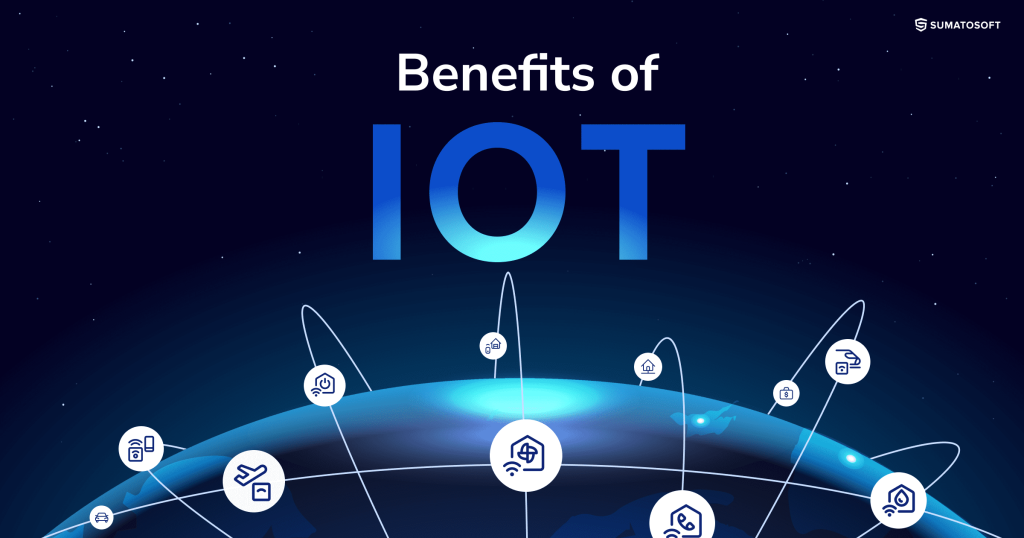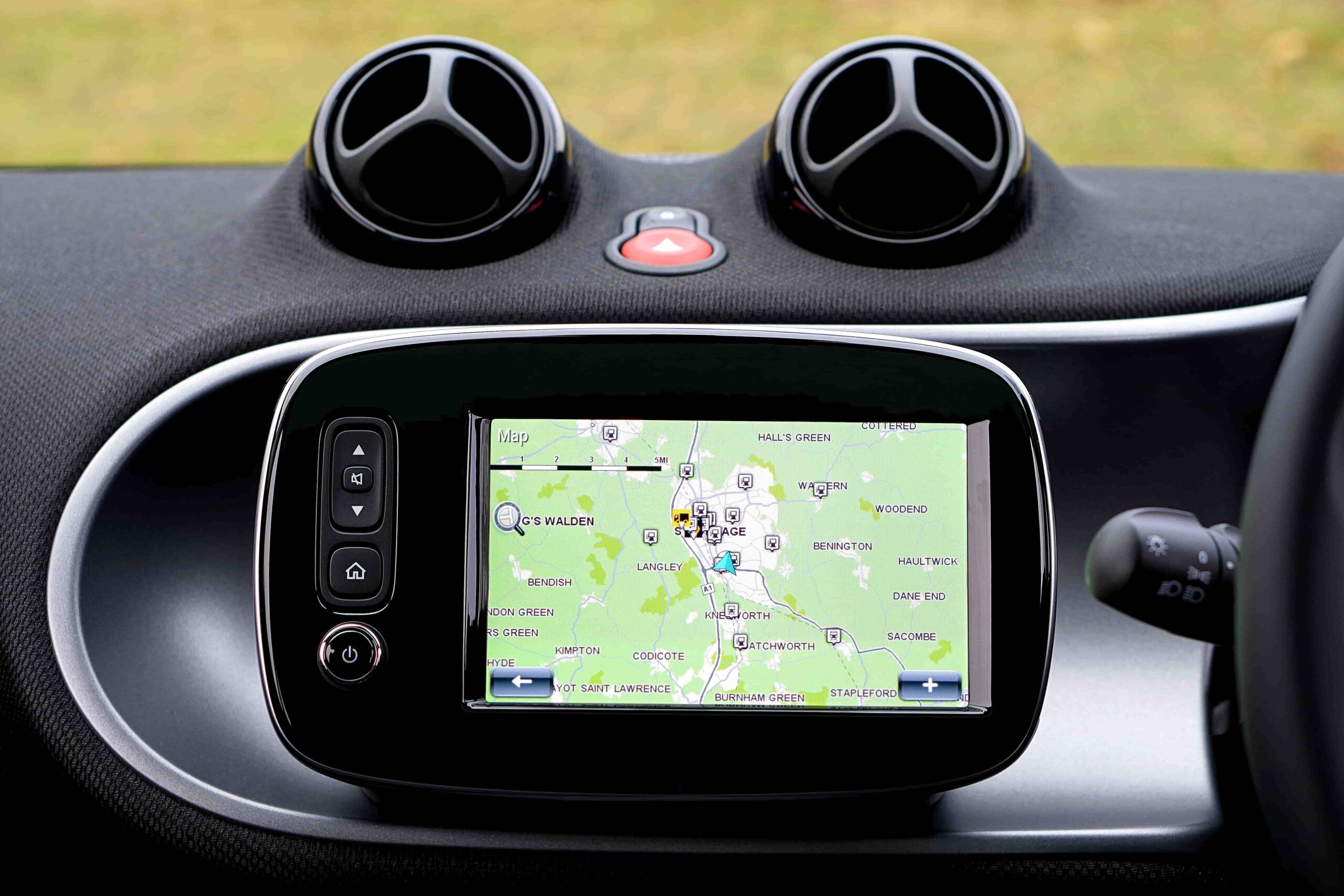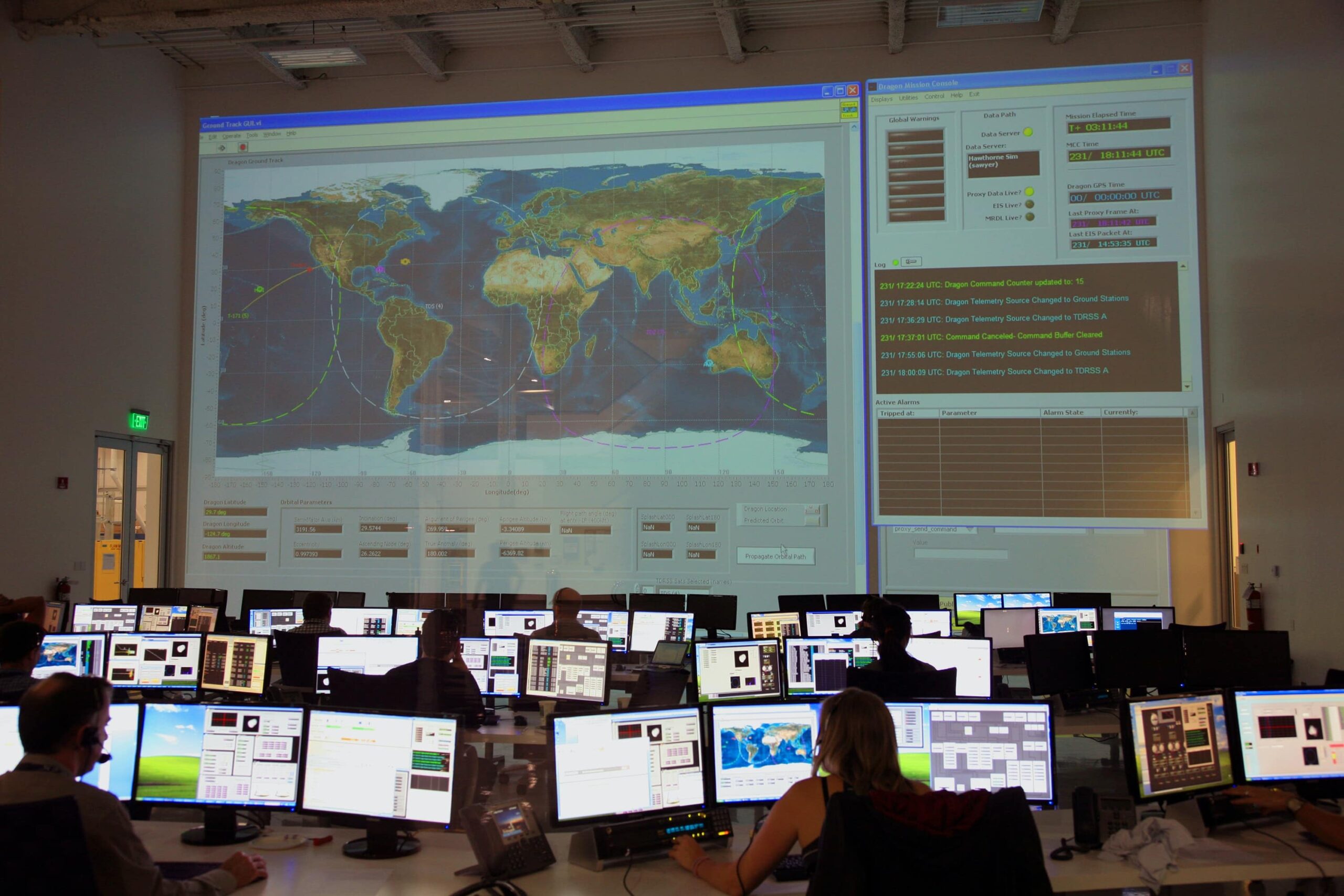10 Benefits of the Internet of Things You Should Know [2025]


We have millions upon millions of different devices transferring data through the internet with zero human involvement in this day and age. In its State of the Internet of Things — Summer 2021 report, the Internet of Things Analytics estimates that there will be more than 27 billion Internet of Things connections by 2025.
Simply put, anything from refrigerators, through air purifiers, to wall sockets, anything can be permanently connected to the Internet and become a part of the Internet of Things Architecture.
This astronomical rise has a lot to do with small and efficient chips becoming less expensive to produce and distribute. It is also a result of tangible advancements in the development of the Internet of Things-appropriate wireless technology, such as Z-Wave and Zigbee protocols.

What Does IoT Stand For
IoT stands for “Internet of Things.” This term refers to the network of physical objects (“things”) that are embedded with sensors, software, and other technologies for the purpose of connecting and exchanging data with other devices and systems over the Internet. These objects can range from ordinary household items to sophisticated industrial tools.
The core of the Internet of Things is its ability to make previously unconnected objects interact and share data with each other. This interconnectivity enables various applications, from smart homes where appliances can communicate and be remotely controlled to smart cities with enhanced public services and energy efficiency and to the industrial Internet of Things (IIoT), which optimizes manufacturing processes and supply chain management through real-time data analysis. Here are some facts about the Internet of Things:
However, while the Internet of Things offers significant benefits in terms of efficiency, convenience, and data utilization, it also presents challenges such as security vulnerabilities, privacy concerns, and the potential for increased complexity in managing devices and data.
What Are the Disadvantages of the Internet of Things?
Before we delve into what the Internet of Things brings, we should cover some of the disadvantages of this ecosystem. Here are the most notable ones:
- High Internet dependency — the Internet of Things systems are tethered to the Internet; without a stable connection, their reliability is compromised.
- Lack of international standardization — The absence of global standards for the Internet of Things means devices from different manufacturers may not communicate seamlessly.
- Risk of system-wide failures — A single bug or cyberattack could jeopardize the entire Internet of Things network.
- Inherent complexity — From design and development to implementation and maintenance, managing an expansive Internet of Things ecosystem is no small feat.
- Job displacement risks — Advanced applications, like automated assembly lines and self-driving vehicles, could threaten human jobs in certain sectors.
- Privacy and security vulnerabilities — Ill-managed systems can expose sensitive data, and their networked nature makes them susceptible to security breaches.
Beyond these technical and privacy issues, there are more nebulous long-term implications to consider. Over-reliance on smart technologies could potentially lead to cognitive laziness, causing future generations to become mentally complacent.
Having shed light on these challenges, we can now pivot to the numerous benefits the Internet of Things technology offers.
10 Benefits of the Internet of Things

Despite the drawbacks outlined earlier, there’s no doubt that the Internet of Things (IoT) is more than just a passing trend—it’s here to stay. As such, our best approach is to harness its full potential while striving to make it as secure and beneficial as possible.
In the introduction, we touched upon how everyday items like refrigerators and wall sockets can now connect to the Internet. But the benefits of the Internet of Things extend far beyond these seemingly simple applications. Stay tuned as we delve into the core benefits of this transformative technology in the next section of the article.
#1 Benefit: Control and Automation
Although some may describe it as nothing more than a gimmick, the humble, smart bulb is one of the best and simplest examples of control and automation via an Internet of Things device. Smart light bulbs have exploded in popularity in recent years for a reason.
On the face of it, these devices, which connect to your home network, provide you with nothing more than the ability to turn the lights in your home on and off remotely.
But a smart bulb is more than just a remote light switch. It enables you to set the scene for a particular time of day, automatically turn the lights off in the living room when you open Netflix on your smart TV, etc.
Moreover, Internet-connected devices such as air-conditioners, coffee makers, and humidifiers can all be integrated with Google- and Amazon-made voice assistants, allowing you not only to turn them on or off through simple voice commands but also to automate their schedules.
When it comes to business and industrial applications, the Internet of Things devices can be used to control robotic assembly systems, manufacturing lines, printers, and all kinds of other machines in an office space or factory.

#2 Benefit: Real-Time Access to Information
Just looking at the increasing popularity of real-time analytics and heatmap tools, we can all agree that access to real-time data is incredibly helpful both for business and ordinary purposes. One of the primary benefits of the Internet of Things is the uninterrupted flow of information. Internet-connected devices can share data at the speed of light, which means fewer delays and a lower potential for miscommunication.
Imagine a large warehouse where each product is logged and connected through an Internet of Things network. Information such as product movement would be updated in real-time, allowing new stock to be ordered automatically at the exact right time and in the exact correct quantity.
Real-time monitoring is even more crucial in other settings, such as nuclear power plants or even grain silos. Sensors measuring temperature or humidity can be used to inform an Internet of Things system, which would, in turn, automatically control these parameters.
#3 Benefit: Emerging Businesses
The rise of new technology always brings an explosion of new business opportunities, and the Internet of Things is no different. Although smart devices have long penetrated almost every aspect of society, we are still years, or perhaps decades away from widespread global use.
The Internet of Things software development services provided by SumatoSoft are at the cutting edge of technological advancement, providing businesses with next-generation industrial Internet of Things solutions.
Many other businesses are revolving around the use of the Internet of Things, such as installing Internet-connected devices into vehicles, building smart wearables designed explicitly for people with high blood pressure or diabetes, and so on.
The Internet of things could also potentially be utilized by branding and marketing agencies, which would use artificial intelligence and advanced data collection to develop their digital strategy services.
#4 Benefit: Advanced Data Collection
The Internet of Things provides excellent opportunities for data collection and business growth. Deployed across a wide range of devices, the Internet of Things benefit of data collection can help business owners make decisions on a macro scale as well as a granular level.
A simple example would be internet-connected tags on retail products, which could provide real-time data about purchasing decisions and trends on a daily or weekly basis.
This relatively simple process could improve inventory control and provide much-needed insight into consumer behavior and purchasing patterns.
Cross-referencing these figures with other information, such as ZIP codes or membership card numbers of individual customers, can produce vast pools of statistically relevant data.

#5 Benefit: Improved Efficiency
By its very definition, the Internet of Things operates without human intervention. It is a system relying solely on machine-to-machine communication, with data logged and collected in real-time, at any time of day or night. One of the most significant impacts of such a system is the increased efficiency of a wide range of services.
Staff members no longer need to spend valuable time collecting and processing information, as machines can effectively take over this job. This Internet of Things benefits leave human staff more time for creative endeavors, enabling them to focus on utilizing the collected information rather than the collection of data itself.
Tracking routes and mileage of vehicles is a typical example of machine-to-machine communication improving efficiency. A huge company that owns a fleet of cars can appeal to enterprise software development companies and build a system that will track the mileage and usage of each vehicle using the Internet of Things devices rather than relying on employees to complete this task.
The devices would then send data back to a server in real-time to track and monitor vehicle use.
#6 Benefit: Improved Quality of Life
So far, we’ve dealt mainly with the benefits of the Internet of Things in business, but focusing solely on this aspect would be shortsighted. There are many ways in which big data and the Internet of Things could improve the quality of life of ordinary people.
For example, in medicine, smart devices could save many lives. Smart pills sending back data as they make their way along the gastrointestinal tract or blood-pressure monitors sharing information with an Internet of Things system in real-time could be genuine life-savers.
Improved quality of life from the Internet of Things networks doesn’t only apply to individuals. Smart devices could benefit entire communities, with internet-connected traffic sensors and lights easing congestion in heavily populated areas, for example.
Smart devices in vehicles could connect not only to traffic lights but also to toll gates and road safety monitors, providing drivers with real-time feedback on road conditions on the way to their respective destinations. Of course, smart city traffic requires expensive Logistics & Transportation software development services but it will definitely pay off over time.
#7 Benefit: Cost Reduction
Interconnected devices provide many opportunities for cost reduction. The Internet of Things mesh not only provides a chance to analyze data in real-time but improves efficiency across the board, as explained earlier.
This could offer a variety of Internet of Things benefits, such as more effective inventory management, reductions in development cost, and even reduced expenses in production and transport of raw materials. As businesses become smarter, prices should theoretically go down across the board.
Ambient temperature sensors could be connected to automated cooling and heating systems, offering highly efficient climate control with no human interaction whatsoever. Lights could be set up to turn on only when necessary, thus reducing utility costs, etc. Cost reduction is one of the strongest impacts of the Internet of Things on businesses and one that motivates business owners to invest in it.
#8 Benefit: Higher Productivity
The Internet of Things can also improve efficiency and productivity at work and in the industrial sector, similar to how voice-activated Amazon and Google products increase efficiency at home.
Data collected through a network of Internet of Things devices, for example, provides highly detailed data that can be used by businesses to improve their internal processes and customer service. As a practical example of the benefits of the Internet of Things, if an energy company cannot gain access to a property, it will estimate its utility bill.
However, if the electrical box were connected to the utility company’s server through the internet, the customer would never have to worry about an overcharged estimated bill again.
#9 Benefit: Big Data and Predictive Analysis
Here’s a buzzword that you’ve almost certainly heard but may not know much about — big data. This phrase has been around long before the Internet of Things took off, and it describes a process of collecting and analyzing vast amounts of information for various purposes.
One of the purposes of Internet of Things systems is to gather data, whether to track customer activity, inventory, vehicle use, temperature, or whatever else you can think of. All this data is fed back into the system, ultimately improving the efficiency of various processes.
Successful analysis of big data can predict everything from stock movement to customer behavior and generate new opportunities in the business world.
As more and more smart devices reach our homes and schools and more data is gathered, we’ll see an ever-increasing number of Internet of Things benefits and ways in which predictive techniques can be used to improve our lives.
#10 Benefit: Health and Safety
Technological and medical advances have enabled more humans to reach old age, but these boundaries are being pushed further every year.
In a medical emergency, every second could mean the difference between life and death, and the highly interconnected world of the Internet of Things could bring about a plethora of benefits.
Imagine a simple health bracelet with a system to keep an eye on blood sugar levels. This internet-connected device could log any blood sugar or insulin levels changes and send notifications directly to medical personnel or family members.
For people with chronic illnesses, who should ideally be constantly monitored by health professionals, discreet Internet of Things devices could provide life-saving real-time data.

Conclusion
Whether we like it or not, the world of AI and the Internet of Things is rapidly growing all around us. Clearly, these devices offer many opportunities for businesses to take advantage of. However, there are also many benefits that we as individuals can see from this technology in the future.
In the article above, we have listed ten of the most notable and apparent benefits of the Internet of Things. However, only time will tell how many of these benefits will stand the test of time and whether we can learn to incorporate them into our lives successfully.
Let’s start
If you have any questions, email us info@sumatosoft.com




